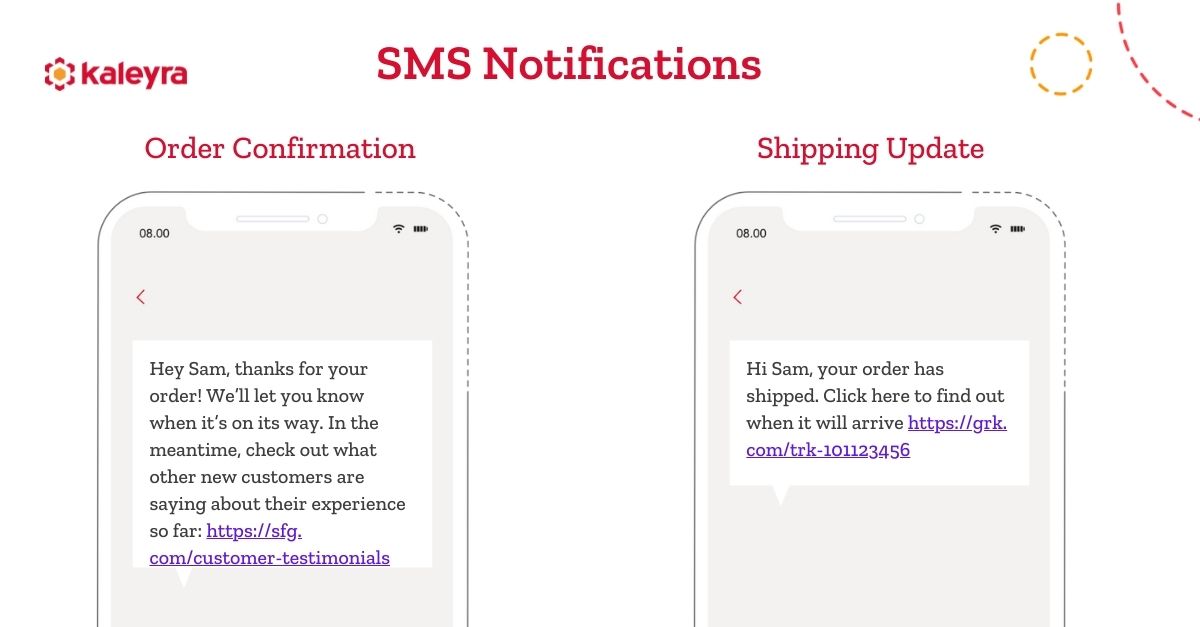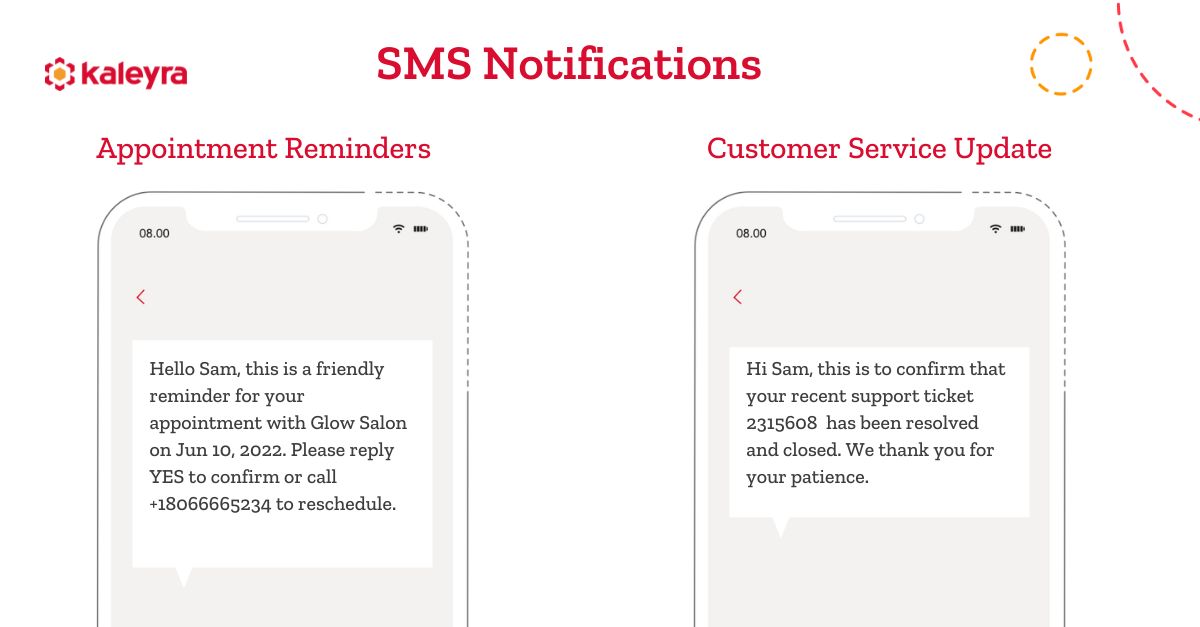4 Min Read
Channeling SMS Notification For Customer Engagement
The very first SMS dates back to December 1992. In terms of the timeline at which technology evolves, communication through SMSes could very well be perceived as the equivalent of a carrier pigeon. However, a survey conducted by the Mobile Ecosystem Forum in 2016 revealed that text messages were still in the top 3 modes of communication in terms of global reach.
What is an SMS Notification?
SMS notifications refer to short text messages used to share information, news, updates, alerts, etc. Organizations use text message notifications to reach people on their mobiles. Since SMS is one of the top medium with high open rates, text message notifications are used widely in all industries.

Benefits of SMS notifications:
Reliability
Unlike the spam filters that are built in for emails, SMS notifications ensure a 100% delivery rate. If you’re looking to reach to your customer, SMS notifications provide a direct link.
Accessibility
Every single mobile phone has the ability to receive a text message. This broadens a business’s ability to reach a larger group of people.
Brevity
SMSes are short. The information in them is limited to 160 characters and it provides the customer with information that they require with disrupting their daily routine.
Open Rates
According to research, SMSes have a 98% open rate and most of these take place within 3 minutes of the message being delivered.
One of the main reasons why businesses do not choose SMSes as a marketing tool is because it seems irrelevant. After 25 years, it does not seem like the most obvious choice. Why? Because most people communicate via web-based, chat applications. This assumption is misleading since these chat applications are often used for personal communication. SMS in 2018 is more relevant now for businesses since it is associated as a means of communication with a business.
Take a look at another article we wrote to see how the humble SMS was, is and will be the future of communication to see why this is still such an important and relevant technology in today’s business world.
If a business is looking to broaden its customer base, SMS notifications offer a more efficient function.
SMS Notification Examples:

Let’s look at a few examples of SMS alerts and notifications:
SMS for Retail:
Businesses in the retail industry can send SMS messages to announce a sale, to give order confirmation, and also shipping updates.
SMS for Healthcare:
Healthcare companies can use SMS to send appointment reminders, health test results, and prescription refill reminders.
SMS for Banking:
Banks can send notifications about Account Balance, Withdrawal and Deposit alerts, and announcement of new banking features.
Targeting customers is easy when it comes to SMS marketing. A customer is never going to wonder why they’re receiving a notification from a business because the customer usually opts-in or subscribes for updates. SMS notifications also give customers the choice of interacting rather than being forced to do so through a phone call.
While emails and social media are still popular means of communication, they require the recipient to have an internet connection. A promotional notification on one of these channels is very easy to ignore. Furthermore, notifications for these channels can very easily be disabled. SMS notifications will always show up on a cell phone.
SMS notification has evolved and adapted to every mobile platform more efficiently than any other channel of text-based communication, in addition to being capable of promoting other marketing media. The stats for response rates for text messages cannot be ignored. It only seems outdated because it is one of the first forms of instant communication through a mobile device.
